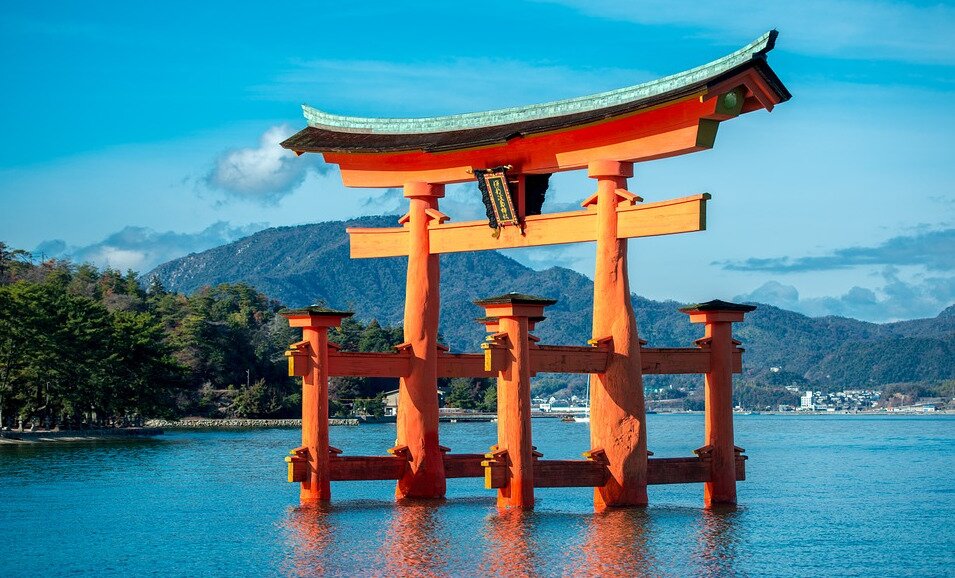Monuments and Museums dedicated to the a-bomb victims
Rather than being depressing or intimidating, a visit to the city of Hiroshima can be uplifting and informative
Hiroshima is an energetic city of beautiful parks and gardens, where the memory of the atomic bombing of 1945 is presented in ways that are heartfelt, informative and tactful. The city itself, especially its Peace Memorial Park, is a passionate monument dedicated to wiping out atomic weapons.
And yet Hiroshima does not feel steeped in tragedy; it’s a welcoming place for tourists, offering a wide variety of things to do and see. While this article focuses exclusively on Peace Memorial Park, the article A Tourists Guide to Hiroshima gives more general information on Hiroshima for tourists.
Peace Memorial Park
Memorialising the horrific tragedy of war can be difficult, but Hiroshima’s Peace Memorial Park is, arguably, the model by which all others can learn. The Park is located at what was the hypocentre of the atomic bomb; at the time the location was the centre of Hiroshima city and a buzzing commercial zone.
It is now a very large park, which is home to two museums and a number of monuments dedicated to victims. American visitors need not feel intimidated; by design the park and museums do not aim to place blame, only to inform about the facts and to honour those lost in the tragedy.
The Park’s Museums
The Park’s main museum is the Peace Memorial Museum, which is very extensive in its coverage of the bombing, from details about the lead up to the bombing, to the effects of the bomb on the city to information about nuclear weapons. The museum is very dedicated to providing impartial information and exhibits that are not intended to shock, and while some presentations may prove disturbing, the nature of the material probably facilitates that effect.
At 50 Yen, which is approximately fifty American cents, entry to the museum costs close to nothing. Another museum in the Park is the National Peace Memorial for the Atomic Bomb Victims. This is a smaller museum to which admission is free, the main feature of which is interactive audio and visual accounts of the day of the bombing; by the victims. The audio material is in multiple languages and is very moving and emotional.
The A-Bomb Dome
After the rubble from the bombing was cleared, one building, the skeletal remains of the A-Bomb Dome, was left as a reminder of the tragedy. Its twisted metal beams, surrounded by scorched rubble are certainly potent for those ends. The Dome sits on the edge of the Park, free for all to view.
The Children’s Peace Monument
The Children’s Peace Monument is dedicated to the children who died during and as a result of the bombing. The monument is partly inspired by the famous story of Sadako, a child who died from Leukaemia after the bombing, and who believed that folding 1000 paper cranes would cure her.
The main statue of the monument shows a child holding large paper crane aloft and the monument is usually surrounded by reams of paper cranes folded by people from all around the world.
The Peace Bell
The large Peace Bell was donated by the Greek Government, and has a wooden pole that can be used by the public to sound the bell for world peace. When struck the bells ring can be heard throughout the park.
The Cenotaph for the A-Bomb Victims
The Cenotaph for the A-Bomb Victims sits central in the park and is an arch-shaped monument with great symbolic significance. Below the monument, a concrete box holds a list of the names of all the known victims of the bombing.
At a ceremony each year, newly discovered names are added to the list. In line with the cenotaph is the Peace Flame, which has been alight since 1964, and will burn continuously until all atomic weapons in the world are destroyed.
There are many other monuments in the park, and one to two full days is likely required to fully appreciate the park and to traverse the museums.
Peace Memorial Ceremony
Annually on the 6th of August the Peace Memorial Ceremony is held in the Park, in which people from all over the world come to watch as new names are added to the list of victims at the Cenotaph.

